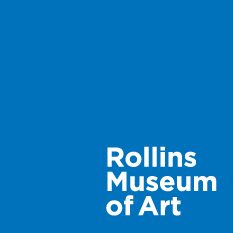Antonio (“Toño”) Martorell (born 1939) is a Puerto Rican multi-media artist, educator, and writer, and a pillar of Caribbean contemporary art history. An intellectual, an artist of artists, and an artist of and for the people, Martorell‘s prolific body of work spans over six decades, consistently making references to the histories, diversity and resilience of Puerto Rican culture in face of adversity.
Work of the Week: Tobi Kahn, “Patuach Sagur Patuach”
Tobi Kahn (American, b. 1952), Patuach Sagur Patuach, 2012, acrylic on wood, 9 3/4 x 12 3/8 x 8 3/4 in., A Gift from the […]
Work of the Week: Catherine Yass, “Lighthouse (North north west, distant)”
Catherine Yass (British, b. 1963), Lighthouse (North north west, distant), 2011, Photographic transparency, lightbox, 50 ¾ x 40 ¾ in., The Alfond Collection of Contemporary […]
Work of the Week: Käthe Kollwitz, “Untitled (Mob [Family] with Dead Child)”
Käthe Kollwitz (German, 1867–1945), Untitled (“Mob [Family] with Dead Child”), n.d., Dry point etching, Gift of Mrs. Ruth Funk, Cornell Fine Arts Museum 2001.04.09.PR […]
Work of the Week: Romare Bearden, “Byzantine Frieze (from the series Ritual Bayou)”
Romare Howard Bearden American (Charlotte, North Carolina, United States, 1911 – 1988), Byzantine Frieze (from the series Ritual Bayou), 1971, lithograph collage, 17 7/8 […]
Work of the Week: Reginald Marsh, “A Young Woman Reading on the Subway”
I recently read Jennifer Egan’s historical novel Manhattan Beach, a noir thriller that transported me to New York during World War II. The main character, Anna Kerrigan, comes of age at a time when the country grappled with war abroad and its effects at home. Resilient and determined, Anna works at the Brooklyn Naval Yard as a diver repairing ships. The rich descriptions of the naval yard, the city streets, and the dark, smoky nightclubs, paint a vivid picture of the context in which she lived and worked. Newspapers reported on the war in Europe, and she learned of individuals’ experiences through letters and friends’ accounts. While reading, I thought about how young women experienced the city at this historical moment.
Work of the Work: Tom Peterson, “The Divine Comedy”
This painting references the titular narrative poem by Dante Alighieri (1265-1321), a work of Italian literature originally published in 1320. Dante’s Divine Comedy chronicles the author’s supposed visit to the realms of the afterlife, narrated in first person. Towards the right of the composition, Dante the Pilgrim—the figure holding a book—traverses through Hell, indicated by the fiery orange background. Specifically, Peterson referenced the thirteenth canto of the Inferno, where Dante and his spiritual guide Virgil journey through the forest of the suicides in the seventh circle of Hell. In the Inferno, violence against oneself is punished by the transformation of the body into a tree where the mythical harpies nest. In the narrative, Dante plucks a twig from a gnarled branch, only to witness blood gush from the wound and the trunk angrily yelp at him.
Work of the Week: Cig Harvey, “Scout and the Clementines, Rockport Maine”
Cig Harvey describes that the series examines her relationship with life itself, and it began after a critical moment in her life. Harvey was in a car accident, and though physically unharmed, she did not speak for six weeks after the event. She was overwhelmed with thoughts of what could have happened if her daughter had been in the car with her. The idea that anyone’s life can change drastically in an instant altered Harvey’s perspective significantly, especially with her role as a mother.
Ridley Howard: Paintings & Moments
Earlier this week I happened to get off the elevator on the second floor of The Alfond Inn. I had […]
Jordan Casteel: Voice & Process
Jordan Casteel and I have Italy and New York in common as career influencers. It was during a semester spent […]
Exuberance in Nicole Eisenman’s Painting
Last summer, when our museum was closed due to the pandemic and the future was very uncertain, we started looking for new […]
Joseph Cornell, James Rosenquist, and Generational Transmission
Back in September, I wrote about the affinities between Joseph Cornell and Earl Cunningham, two untrained eccentrics who made collecting […]
George Grosz and America
When I saw the listing on the CFAM website for the artist George Grosz, I wondered if someone had made […]
The Underappreciated Tom Wesselmann
A few weeks ago, I wrote about Wayne Thiebaud, whose career has been much more varied than I had previously […]
Some Notes on Historical Notability
Usually in this space I am eager to share my most exciting finds, such as my renewed appreciation for Wayne […]
